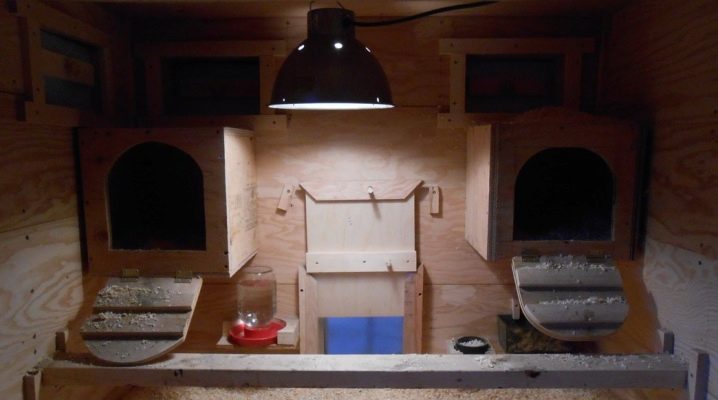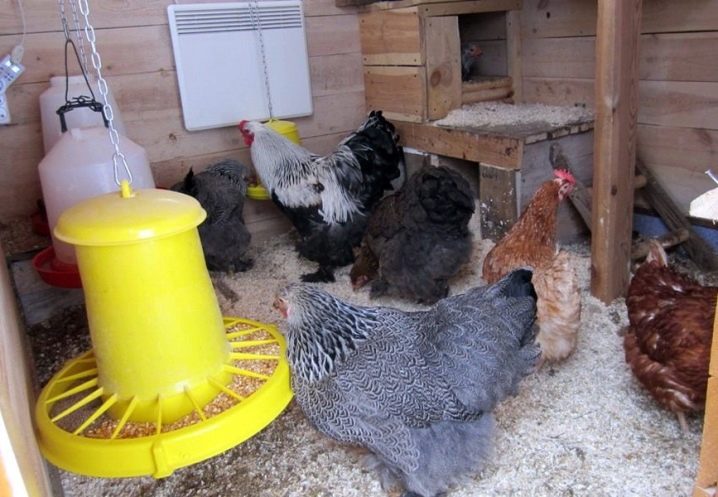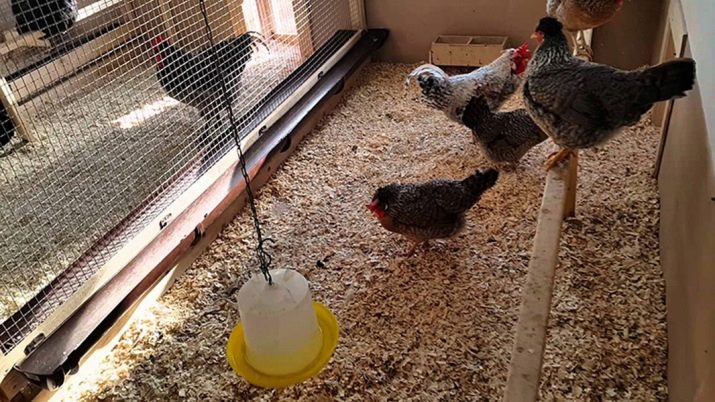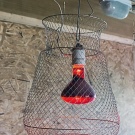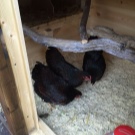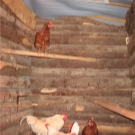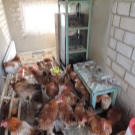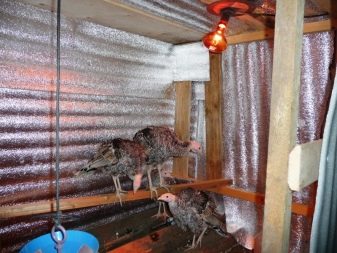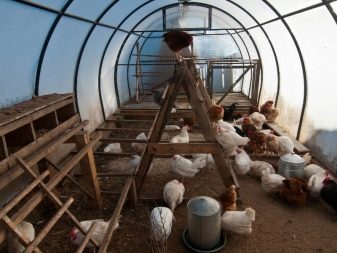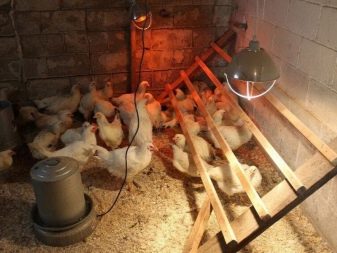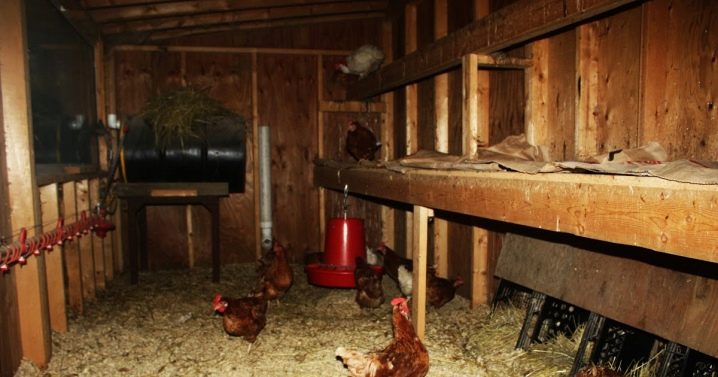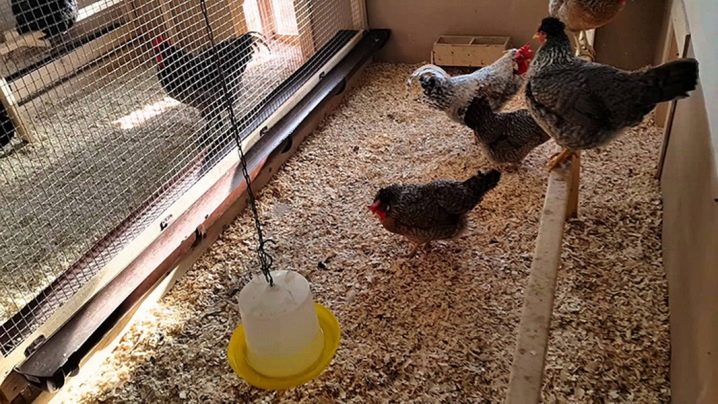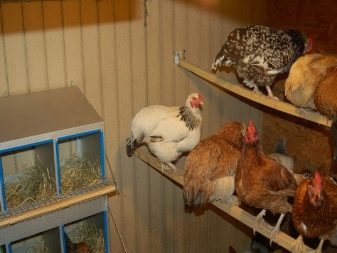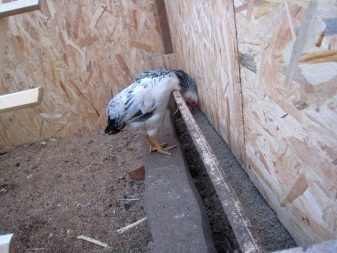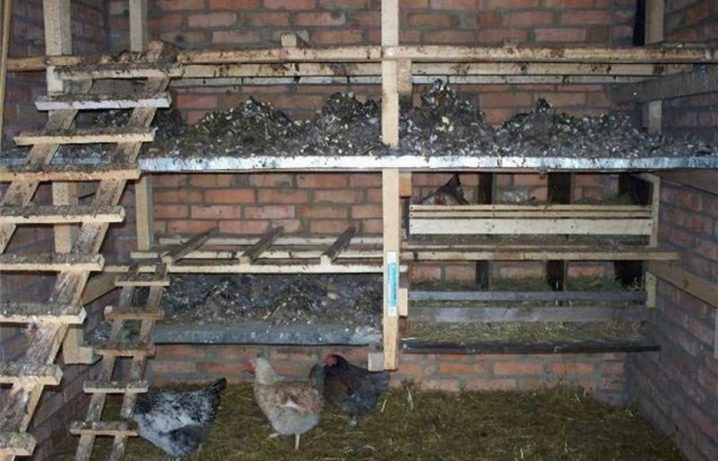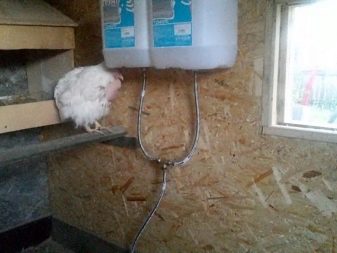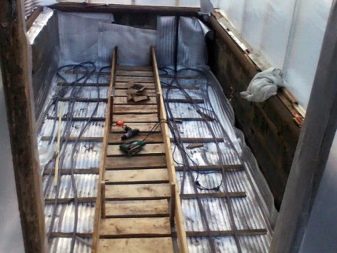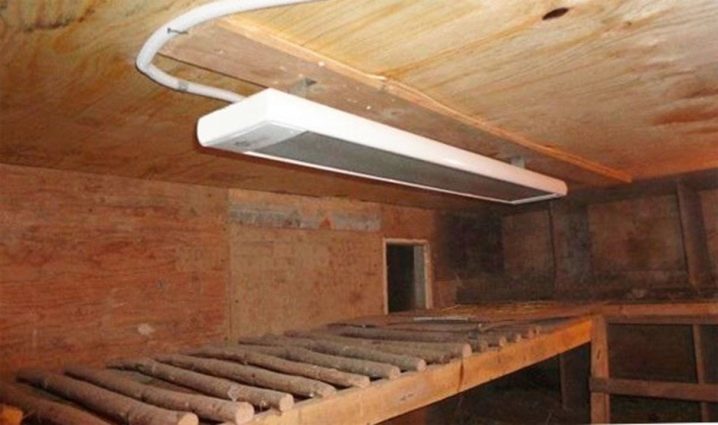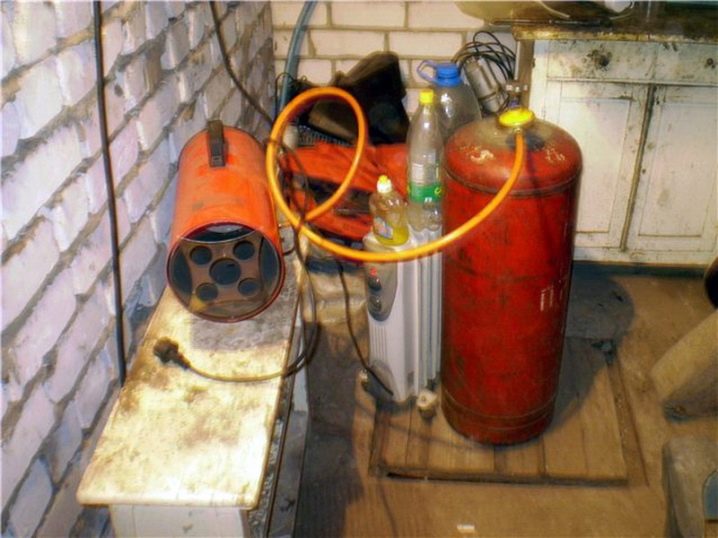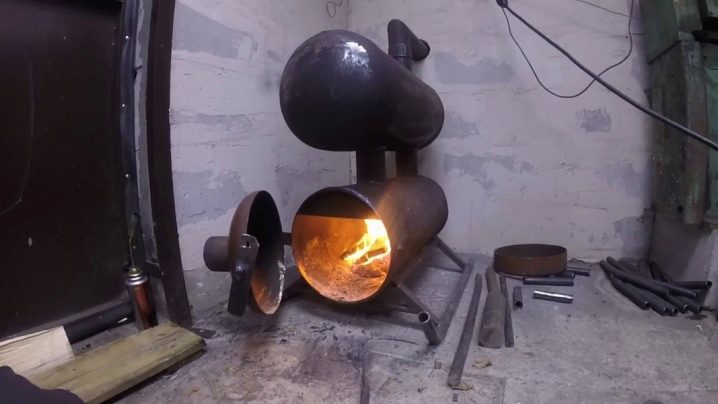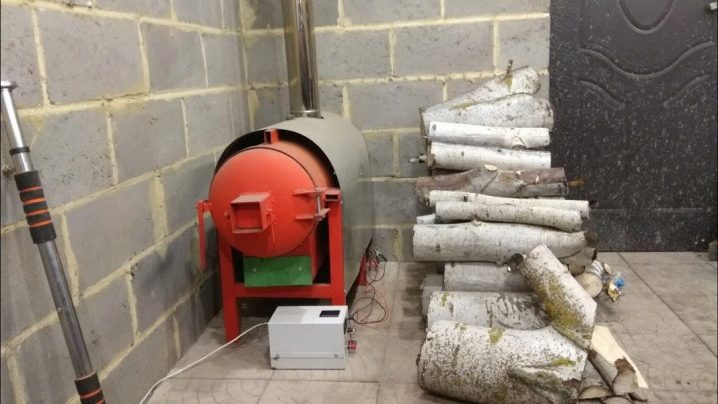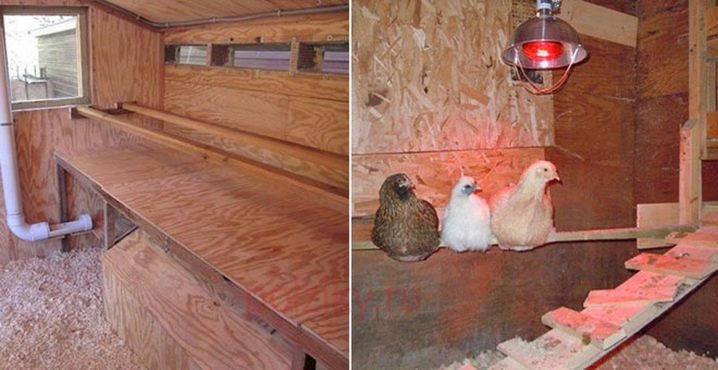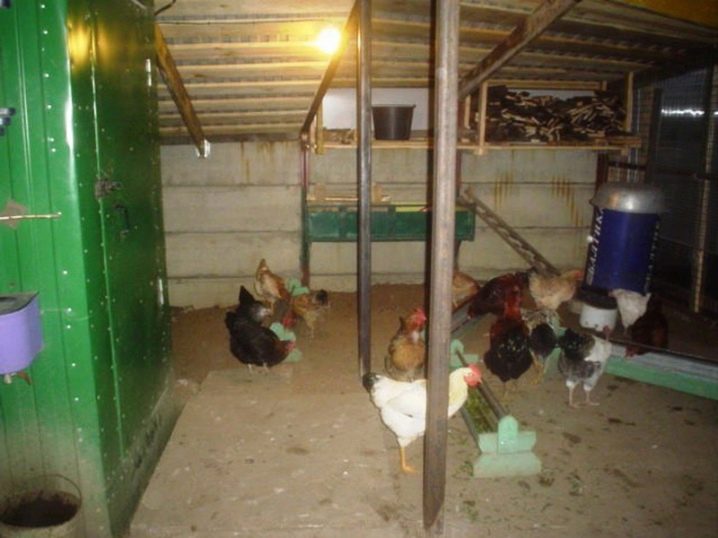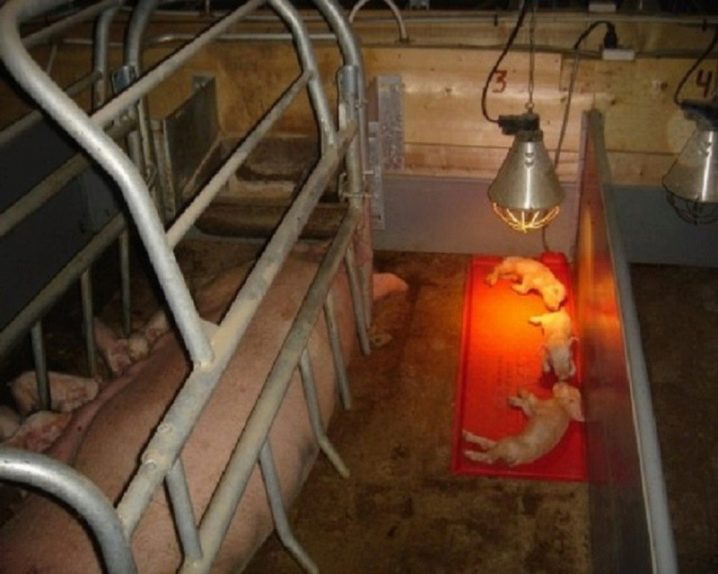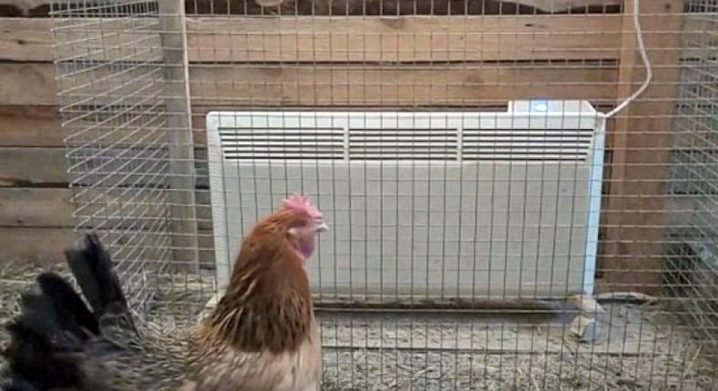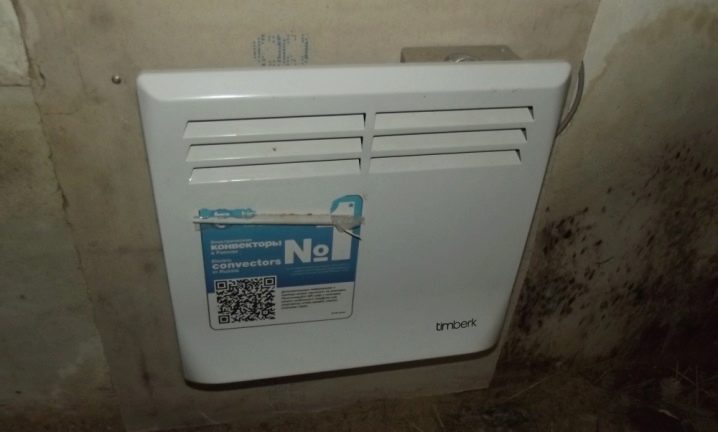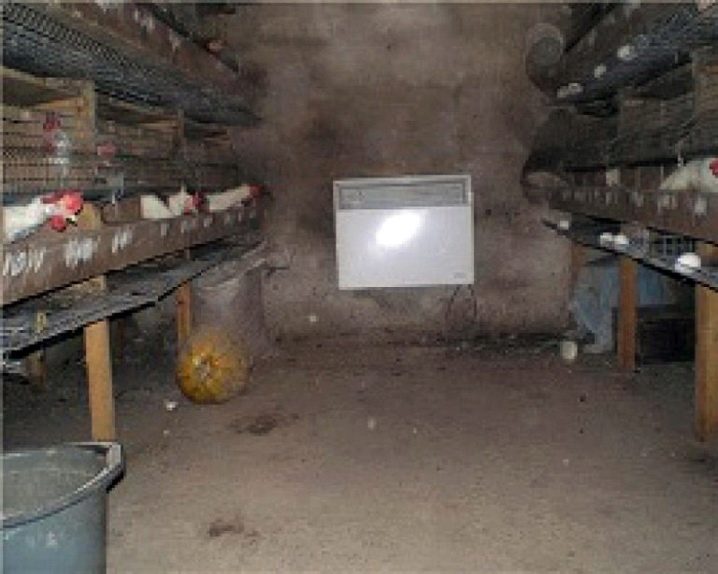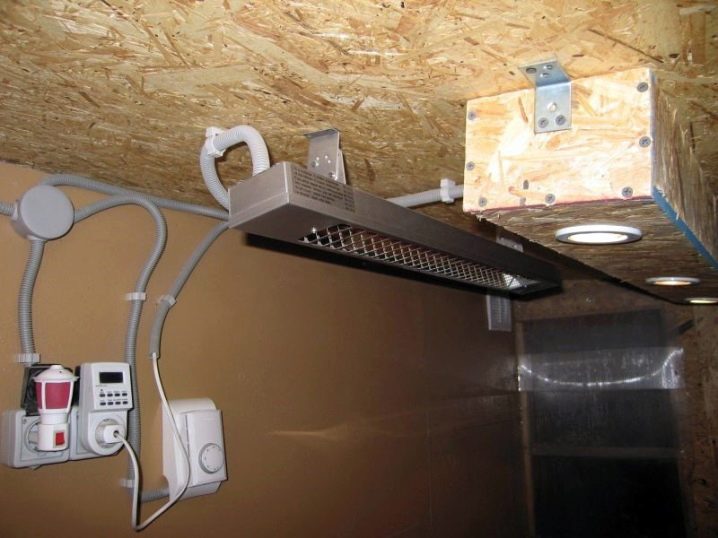Heating the chicken coop in winter: heating methods and suitable types of electrical appliances
Heating the coop in the winter is an important event. The creation of thermal comfort is considered a prerequisite for growing birds and is not only due to concern for the condition of each individual, but also dictated by purely economic considerations.
The need for heating
Creating a favorable temperature regime is directly interrelated with the productivity of chickens and is a necessary guarantee for successful farming. Even a slight decrease in temperature in the hen house, which lasts for several days, can drastically “drop” the egg production of the bird and noticeably reduce the weight gain by broiler chickens.Heat plays the role of priority conditions of detention, along with feeding and making the necessary additional feedings. In addition, in a cold room, the risk of catarrhal diseases sharply increases and there is a noticeable decrease in immunity, and when the temperature drops below 5 degrees, the bird can earn leg arthritis. Also, a sharp decrease in temperature in the hen house can cause the formation of frost and increase in humidity, which inevitably leads to the occurrence of infectious diseases of broilers and layers.
However, keeping birds at low temperatures affects not only the health of chickens. Besides the fact that the egg production is falling sharply, there are problems with chickens hatching. This is due to the fact that the embryos do not have enough maternal heat, as a result of which a very large percentage of non-hatched chickens die. Due to the fact that the bird has to spend most of its calories not on weight gain, but on heating its body, the feed intake is almost doubled, which, along with a decrease in productivity, casts doubt on the feasibility of breeding chickens.
In winter, the optimum temperature in the coop is 10-15 degrees Celsius. Increasing or decreasing these values violate the biological rhythms of chickens and adversely affect their overall condition. To monitor the temperature in the chicken coop room, it is necessary to hang two thermometers. One of them should be placed at the entrance door, and the second should be placed closer to the ceiling near the upper perch.
When can you not heat?
To organize the heating of the chicken coop, two methods are used - artificial and natural. Each of them has its strengths and weaknesses, differing from the others in energy consumption, efficiency and amount of funds spent. So, for the regions located in the southern or temperate latitudes, the natural method is quite suitable. The main condition for the application of this method is the absence of a significant decrease in night temperatures and strong winds. If the temperature in an unheated room can be kept within 7 degrees, then the natural method is more rational, and, when carrying out a number of heat-saving measures, can be safely used.
The first object of warming the chicken coop is the floor. This is due to the fact that thanks to the plumage, the bird's body is not particularly sensitive to cold, and the only vulnerable point is the legs. That is why the insulation of the floor must be made first. Before you start laying the heater, the floor surface should be sprinkled with powdered slaked lime at the rate of 1 kg / m2. The presence of lime will relieve the premises of the coop from the appearance of fleas and ticks. Then the lime layer is covered with any insulating material, which can be used as sawdust, fallen leaves or straw. The total thickness of the layer should be 25-30 cm.
The most effective means of natural heating of the room is manure. In the process of overheating, the mullein produces significant amounts of heat, which is enough to “heat” the chicken coop during the winter. The only condition for the use of manure is a ban on the removal of the old, already trampled mullein. In such cases, a layer of new fertilizer is placed on top, while preserving the previously laid manure.
It should be remembered that in order to warm the floor, in no case can extruded polystyrene be used. This is due to the fact that the material has a low throughput and is not able to drain off excess moisture. Because of this, the room will be damp and unsuitable for keeping chickens. Concrete floors shift insulating material, and then sheathed boards.
After insulation of the floor, it is necessary to proceed to the insulation of the walls and ceiling. To do this, you need to plug all the cracks, not forgetting to form a small ventilation window. When building a chicken coop that is not equipped with artificial heating, double walls and a ceiling should be made. The cavities between the two surfaces are filled with polystyrene or mineral wool, moreover, the thickness of the insulating layer should not be less than 15 cm. Chickens tolerate frosts up to 12 degrees. The final stage of the hen house insulation will be the insulation of windows and doors, which is carried out with the help of polyethylene or thick fabric.
How to do without electricity?
Artificial heating method requires the use of heating equipment, the choice of which depends on the external temperature, the size of the room and the financial capacity of the farmer. Electric, gas and solid-fuel appliances are used to heat the stacks and chicken coops. The simplest is the electric method of heating, however, with frequent power cuts or with constant power surges in the network from this method of heating is better to refuse and use others.
Stoke gas
Gas heating is of two types: convector and water. The water system works according to the following principle: the heat generated by the combustion of gas heats the water in the heat exchanger to the desired temperature, after which the coolant, moving through the pipes and entering the radiators, heats the room. The essence of convector heating lies in the fact that the appliance is devoid of pipes and has no connection with radiators, heats up exclusively itself, and looks like a large electric heater. Among the advantages of gas heating can be noted the possibility of rapid heating of the chicken coop and high energy efficiency.
The disadvantages include the high cost of equipment and the need for constant human presence. In addition, when installing a gas boiler will require permission of gas services and strict compliance with the construction of fire safety standards. This type of boiler equipment is advisable to use in large poultry farms, where there will be ongoing monitoring of the device and its maintenance.
Burzhuykoy
Heating with metal furnaces is the easiest and most affordable way to heat a chicken coop. The potbelly stove differs in the simple device, does not need expensive service and regular leaving. The essence of the work of the stove is quite simple: when burning solid fuel, the metal walls of the stove become hot and begin to give up their heat to the room. The advantages of this method are low fuel cost, quick installation and ease of use.
The disadvantages include the need to comply with fire safety regulations., which obliges to carry out a set of measures aimed at preventing fire. Such measures include the construction of a fireproof pallet and the protection of nearby wooden walls from high temperatures.In addition, the use of a stove requires the constant presence of a person, which is caused by the need to constantly throw up fuel. But the most significant minus of heating with the help of the stove is that it will not be possible to maintain a constant temperature in the room.
Diesel stove
Heating with diesel appliances is also used for heating chicken houses. Such plants are able to quickly warm up the air in the room and, unlike the stoves, have a temperature controller. This allows you to change the intensity of the flame and create the desired temperature in the room. Diesel plants are completely fireproof and environmentally friendly. The disadvantage of such systems is the high cost of diesel fuel, which most likely will not cover the profit received from the sale of chickens.
Buleryanom
This type of furnaces refers to air convection and is a good solution to the problem of heating coops. The devices have high energy efficiency and are able to work on any fuel. In addition, the bulerians, like all convection models, are quite economical and feature high power.This allows you to use them to heat large area poultry farms and farms.
Water heating
Water heating method is considered the most efficient and fireproof. If the dwelling is heated using a water-heating boiler, then the ideal option would be to connect the chicken coop to the heating circuit of the apartment building. To avoid heat loss when transporting coolant from the house to the chicken coop, it is better to build a room for keeping chickens close to the house. In the case of a remote location of buildings, pipes running along the street should be warmed.
Heated from the mains
Heating a chicken coop in winter with electric appliances is the most expensive method of heating. There are many types of electrical heaters, and which one to choose, Each farmer decides independently, based on his own budget, the availability of alternative sources of heat and the volume of premises.
- Ventilation Heater provides a constant circulation of warm air and contributes to the almost instantaneous heating of the room. In addition, the device has a high efficiency, is completely fireproof and ensures uniform heating of the entire chicken coop.The disadvantages of heaters include high cost, high power consumption, overdrying of air and high noise load.
- Oil heaters in appearance they resemble radiators of water heating, and consist of a heating element and sealed containers, inside of which there is oil. The advantages of heaters include low power consumption, which is made possible by the presence of a thermostat. The relay does not allow the device to overheat and turns it off as soon as the coolant temperature reaches a predetermined mark. In addition, devices do not produce noise, do not burn oxygen and do not smell. The disadvantages are slow and uneven heating of the room, the risk of oil leakage in the event of damage and heavy weight.
- Electroconvectors are energy-saving devices, the essence of which is reduced to the absorption of cold air from below and the return of heated masses upwards. The advantages of the devices are the absence of noise and smell, low cost and the preservation of the natural humidity of the chicken coop. The disadvantages include instant cooling and uneven distribution of warm air.
- Infrared lamps and heaters act as follows: their rays heat up all solid objects, which, slowly cooling down, give up their heat to the room. In addition, IR devices successfully kill bacteria, providing reliable protection for poultry against infectious diseases. Heaters are able to maintain the desired temperature, equipped with automatic control and very economical. The disadvantages include the high cost of some models and the need to eliminate contact with water, since in case of splashes on the glass, the lamp can crack and fail.
Choosing the right heating system for a chicken coop will make it possible to use fuel resources efficiently and will help birds survive the winter shortage of ultraviolet rays.
How to heat the chicken coop in the winter, see the next video.
